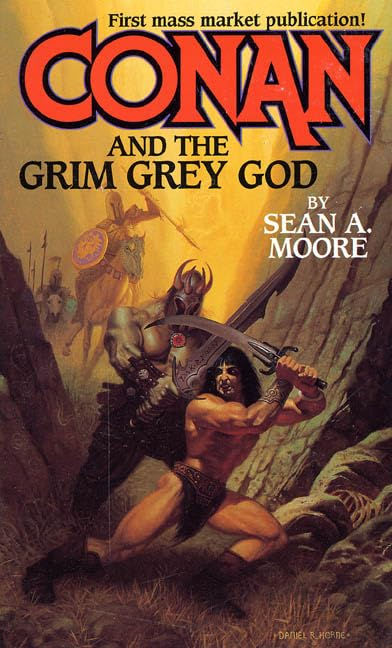The House of Ara-Buscema
- Greg O'Driscoll
- Jan 22, 2024
- 3 min read
CTB #38

Who did the cover on this? It definitely looks like a mixture of styles. The composition is very Gil Kane, but the inking isn't his at all. Nor is the face quite on model for how most of the series regulars draw Conan. The title of the story is The Warrior and the Werewoman. As with the old Tigra comics, cue every comic geek and his brother pointing out that were-woman literally breaks down into "man-woman". Obviously, the writer means "supernatural night monster-woman" when they say were-woman.

Thankfully, I got this copy as a cheap reader along with a bulk purchase of other Conan comics. Otherwise, I might have been disappointed by the crude penned-in additions to the opening page. The women entertaining Conan and his new employer all have prominent black dots where their nipples should be. The helpful artist must also like his ladies hairy because they gave the dancing girl some pit hair and stubble on her legs. Lastly, there is what I take to be a tongue stretching from an unnamed man's head toward a woman's breasts. While I never drew in my own comics as a kid, I always find it hysterical when I randomly happen across stuff like this in a comic. Earlier last year, I also picked up a Superman PSA comic with some graffiti in it.
Anyway, back to Conan. Thomas pens a story "freely adapted from The House of Arabu by REH, creator of Conan" and John Buscema does the art. The foppish Feyd-Ratha (does that name look familiar Dune fans?) makes a clumsy attempt to blackmail Conan, but this might only be to lampshade his helpful exposition. We learn through him that Conan has been dallying with his new boss's woman. Conan drinks and broods about a mysterious female figure haunting his dreams. The dancing girl flips out and tries to kill him, a mysterious voice accuses him of killing priests, and once he gets outside, he hallucinates a cobra striking at him. This is not your usual Conan nor Conan tale, precisely because it is adapted from The House of Arabu.
What follows is a noir-ish tale of suspicion, sorcery, and betrayal. Conan discovers someone has summoned the night witch Lilitu to torment him, but who and why? There are plenty of suspects, including Feyd-Ratha and the cuckolded commander's kinsman. Conan races to find a way to avert the demon woman's wrath. He gets a partial tip from Amytis, his commander's woman and Conan's secret lover. Conan then yanks the rest of the truth out of Amytis along with some of her hair. This was the specific moment that made me see this tale of supernatural treachery as a noir detective vehicle. Conan doesn't often lay unkind hands upon women, but classic noir protags regularly slap them around to get info.
Meeting with the evil priest Gimil-Ishbi, Conan agrees to an unspecified price in exchange for a magic charm that will work upon Lilitu. When Conan is told he must kill someone, anyone, to slake Gimil-Ishbi's fanatical love of death, the barbarian does the sensible thing and kills the evil priest. Hey, he didn't say Conan couldn't pick him! Ironically, the ghostly voice's accusation that Conan kills priests is now truer than ever.

Eventually, Conan confronts Lilitu and her demonic mate Ardat-Lili. Taking Lilitu's bestial groom hostage, Conan gets the truth from Lilitu about who set all this in motion. A showdown with the culprit wraps everything up and sets Conan upon a new path after many issues of serving Turan as a mercenary. If Buscema inked his own work this go around it wasn't one of his better outings, but I liked Lilitu's design as much as I found Ardat-Lili's bland and nonspecific. Poor ol' Ardat-Lili looks much cooler on the cover than he does inside. He has an almost Ploog-ish Werewolf by Night vibe.
I recently revisited the original House of Arabu story. Conan stands in for Pyrrhus the Argive, a yellow-haired mercenary come to Shumir from out of the North. Prince Feyd-Ratha was Prince Ibi-Engur, so the name change seems to be a deliberate nod by Roy Thomas to Frank Herbert's Dune. Otherwise, most of the beats are the same and the story holds up very well. There are several places online where you can read it for free. The first one I found is right here.



Comments